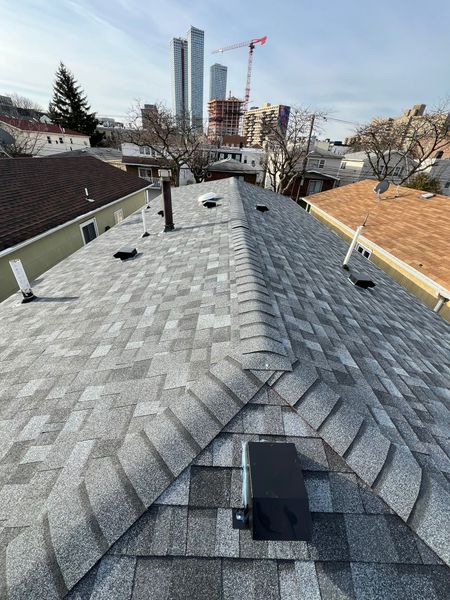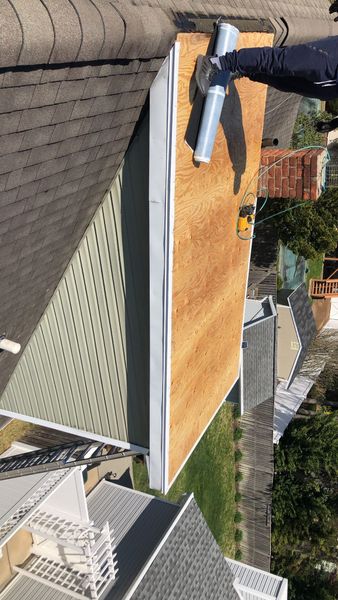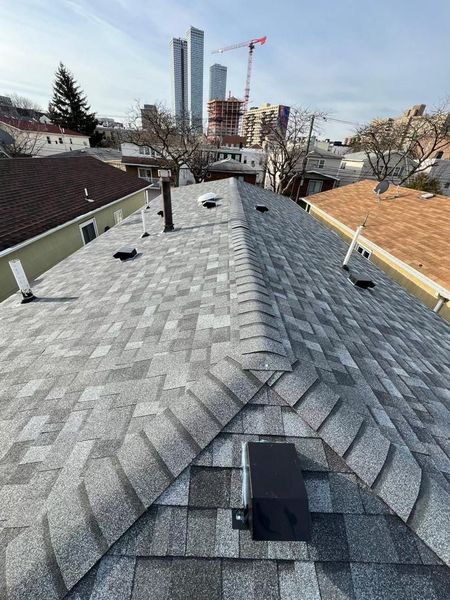Introduction
Choosing the right color palette for house painting can feel like standing at a crossroads. With so many options available, how do you select the perfect hues that will not only enhance your home's aesthetic but also reflect your personal style? Whether you're working with roofing contractors, planning a full remodel with remodeling contractors, or simply aiming to freshen up your space through house painting, understanding color psychology, trends, and practical applications is essential. In this comprehensive guide, we'll navigate the colorful world of paint choices, providing insights into harmonious combinations and expert tips for achieving stunning results.
How to Choose the Right Color Palette for House Painting
When it comes to choosing a color palette for house painting, it's vital to consider both interior and exterior aspects. Your home’s color scheme should create a cohesive look that complements its architecture while also reflecting your personality. Here are some fundamental points to keep in mind:
Understanding Color Theory- Colors can evoke emotions and set the mood of a space. For example:
- Warm Colors (reds, oranges) can create an inviting atmosphere. Cool Colors (blues, greens) can promote relaxation.
- The architectural style of your home plays a crucial role in selecting colors. Traditional homes may suit soft neutrals, while modern designs may benefit from bold contrasts. Take cues from existing elements such as roofing materials or stonework when choosing paint colors.
- Nature offers endless inspiration! Look outside at your landscape—trees, flowers, and even the sky can provide ideas on which colors work well together. Earthy tones often blend seamlessly with natural surroundings.
- While it’s tempting to follow trends in home design, remember that classic palettes tend to have longevity. Popular color trends change frequently; instead of relying solely on them, integrate these hues into accents or specific rooms.
- Always test paint samples before making decisions! Paint swatches on walls allow you to see how colors change with light throughout the day. Use larger sample patches instead of small chips; this gives you a better idea of how the final outcome will appear.
- Different lifestyles call for different approaches to color selection. If you have kids or pets, lighter shades may require more upkeep than darker hues. Think about how much time you want to spend on maintenance when choosing your palette.
The Psychology of Color in House Painting
Understanding Emotional Responses
Colors have the power to influence mood and behavior significantly:
- Red: Often associated with energy; great for social spaces like kitchens or dining areas. Blue: Calming and serene; ideal for bedrooms or bathrooms where relaxation is key. Yellow: Bright and cheerful; perfect for entryways or sunrooms but use sparingly as it can be overwhelming. Green: Symbolizes growth and tranquility; excellent for living areas or offices.
Creating Spaces That Reflect Personality
When selecting colors based on psychology:
- Think about how you want each room to feel. Combine different hues that evoke specific feelings tailored to their purpose—a vibrant workspace versus a restful retreat.
Color Harmony: Finding Balance
To achieve harmony in your chosen palette:
Use tools like the color wheel—this helps identify complementary colors (colors opposite each other). Test combinations in various lighting conditions—what looks good during daylight might change at night.Exploring Different Styles of Color Palettes
Monochromatic Palettes
A monochromatic palette involves varying shades and tints of one base color:
- Ideal for creating depth without overwhelming visuals. Provides sophistication; perfect for modern homes looking to maintain simplicity.
Analogous Color Schemes
Using three adjacent colors on the color wheel creates an analogous scheme:
- This approach provides cohesion while allowing subtle variation—ideal for open spaces where continuity is essential.
Complementary Color Combinations
Selecting colors opposite each other fosters striking contrasts:
- Great for making focal points pop! Consider pairing navy blue with warm orange accents.
Triadic Palettes
This scheme incorporates three evenly spaced colors on the wheel:
- Offers vibrant diversity while still maintaining harmony—perfect if you wish to make bold statements without clashing.
Practical Tips from Industry Experts
1. Collaborate with Professionals
Working with professionals like construction companies or remodeling contractors brings valuable expertise:
- They understand current market trends and provide insights into what works best given local climate conditions (important when choosing paint durability).
2. Maintain Consistency Across Spaces
Creating flow between rooms involves selecting complementary palettes that transition smoothly:
- Use similar undertones throughout different areas—for example, cool grays in one room transitioning into soft blues in another creates visual unity.
3. Factor in Lighting Conditions
Natural light dramatically changes how colors appear:

- South-facing rooms tend to be brighter and warmer; North-facing ones may feel cooler—always observe paint samples during different times of day!
4. Keep It Balanced
Mixing too many styles can lead to visual chaos—aim for balance by limiting dominant shades or using neutral tones as anchors within vibrant schemes.
Choosing Colors Based on Themes
1. Coastal Vibes
For a beachy feel incorporate soft blues paired with sandy neutrals:
- This theme invokes relaxation reminiscent of seaside escapes—a desirable atmosphere if you want guests feeling at home!
2. Rustic Charm
Earthy tones such as browns paired with muted greens reflect natural beauty:

- Perfect if you're looking at deck builders creating outdoor spaces; these palettes work well with wooden features common in rustic designs!
3. Modern Minimalism
White walls accented by black fixtures create striking contrast while maintaining simplicity:
- Minimalist aesthetics thrive on clean lines—and color choices should reflect that ethos!
Exterior vs Interior: Different Considerations
Choosing Exterior Colors
External factors play critical roles when deciding upon exterior paints due to exposure conditions such as sunlight fading over time:
Opt for durable weather-resistant finishes tailored specifically toward exterior applications—for instance siding protection against moisture damage! Ensure any chosen shade aligns well within neighborhood contexts—too stark differences might disrupt community harmony!Selecting Interior Shades
Interior palettes focus more heavily upon personal preferences since they’re less affected by external influences compared against exteriors’ guidelines mentioned above!

2 . Mix textures alongside selected shades—to add dimension visually engaging experiences throughout various areas inside homes!
FAQs About Choosing House Painting Color Palettes
FAQ 1: How do I choose the right color palette?
Choosing the right palette starts by understanding your personal style along with considering architectural elements present within homes themselves! Testing samples extensively under varying lighting conditions ensures ideal choices become apparent eventually leading toward satisfaction overall!
FAQ 2: Should I hire professionals?
Absolutely! Hiring experienced professionals such as roofing contractors or remodeling specialists provides invaluable insight regarding trends plus practical advice ensuring successful outcomes achieved efficiently!
FAQ 3: How often should I repaint?
Typically every five years is recommended depending upon wear-and-tear factors influenced by environmental elements surrounding houses themselves along with lifestyle impact considerations too making oversight necessary periodically reviewing conditions yearly basis avoiding surprises later down road!
FAQ 4: Can I mix different styles together?
Yes! Mixing diverse styles adds character providing uniqueness allowing personalization opportunities showcasing individuality! Just ensure balance maintained amongst selections preventing chaotic appearances resulting house painting from excessive variety present simultaneously potentially overshadowing desired looks intended achieve ultimately!
FAQ 5: What about undertones?
Undertones are crucial—they determine how well certain shades interact together enhancing cohesiveness throughout entire homes ensuring pleasing outcomes achieved rather than mismatched disarray possibly arising otherwise if overlooked meticulously planned ahead thoughtfully mindful attention paid detail-wise effective execution carried forward flawlessly thereafter completed projects culminating successfully concluding ventures undertaken overall satisfaction achieved collectively shared among clients designers alike alike fostering positive experience cultivated through collaboration efforts combined harmoniously executed throughout entirety respective journeys embarked upon thereafter proudly showcased ultimately showcasing beautiful results enjoyed long-term thereafter periodically revisited over time continuing cherished memories built around spaces designed beautifully intended fulfill purposes effectively catered ideally suited meet needs families residing comfortably within environments curated lovingly crafted tailored perfectly reflecting tastes thereby enhancing quality life lived daily surrounded beauty appreciate fully moments spent shared loved ones creating lasting impressions cherished forever onward henceforth embraced wholeheartedly cherished memories formed timelessly shaping futures envisioned ahead further enriched continuously adding layers depth stories told expressed lived beautifully ordinary extraordinary lives intertwined seamlessly forevermore…
Conclusion
Choosing the right color palette for house painting isn't just about picking pretty shades; it’s an art form that reflects who you are while considering functionality and aesthetics alike! From understanding basic principles behind color theory all way incorporating personal lifestyles navigating complexities involved requires thoughtful decision-making processes complemented timely professional assistance where necessary bolstering confidence ensuring desirable outcomes achieved consistently across board fostering happiness contentment experienced every day spent enjoying our beloved abodes surrounded warmth light inspiration provided endlessly nurtured deeply cherished lovingly crafted rooted hearts minds families extended beyond mere walls embracing whole communities coming together unified harmony creating delightful atmospheres resonate positivity uplift spirits brightening days illuminating paths forward transforming lives beautifully enriching journeys taken hereafter filled joy love laughter shared intimately boundless possibilities await discovery exploration adventure awaits those brave enough step forth embark exciting paths uncharted territories unlocking profound depths experiences yet unfold awaiting eager explorers ready seize moments live fullest expressively authentically unapologetically uniquely splendidly beautifully magnificently living brightly colored lives filled vibrancy essence true selves flourishing abundantly thriving joyously celebrating journey taking place forevermore…